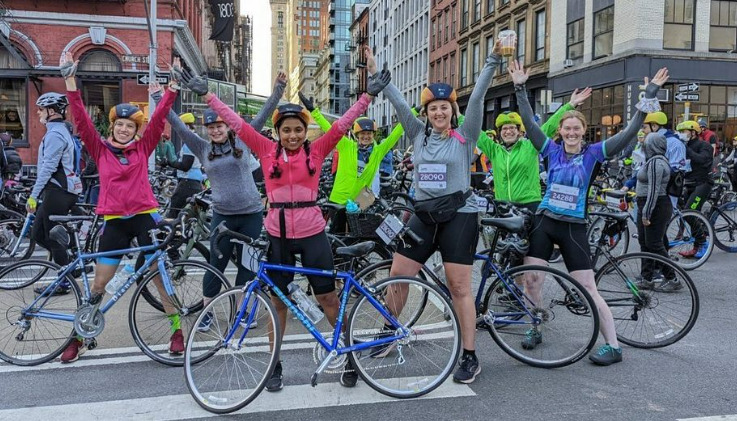By Meg Ausen

Bike Goals in 2016 – What do you want to do this year??
WE have rung in the New Year and cannot help thinking about what we want to accomplish over the next year. WE asked what are some bike goals you all have on our Female Bike Forum and here’s what WE found out. Thanks for your comments and ideas! If you have additional goals you would like to reach and are looking for ideas on how to reach them, let us know here!
Get a Feel for riding around New York City
Are you new to riding in New York City? You have found the right place for finding a community of women who bike and who will support you as you become more comfortable on the roads!! If you haven’t had the opportunity to ride with WE Bike NYC, now is the time! Seize the day! You can learn more about why women, female identifying and gender non-conforming people ride with WE Bike NYC here!
Ride Longer Distances
We heard from many seasoned city riders that a lot of you want to ride longer distances. Whether this is on an organized ride like a 100 mile century or a bike tour, many people have expressed the desire to take on more miles in 2016. Don’t know where exactly to start? WE have a lot of programming each year to help facilitate longer rides. Whether you are hoping to become more comfortable on highway 9w in New Jersey, looking to organize a group of friends to ride with at the NYC Century, or hoping to set out with a tent strapped on the back of your bicycle to take a multi-day bicycle tour, be sure to read our newsletter and check out our Facebook page for programming, tips and news related to riding long distances!
Climbing Hills
Biking around New York City’s five boroughs, WE have discovered that this city boasts its share of hills. WE all have ways of conquering these hills but it’s unclear whether many of us find this process enjoyable. Looking for ways to increase your power on your bike to help you up all of those hills (and bridges)?? Becoming better at climbing hills is unique to each of us, but physical and mental preparation are the two keys to success. Practice! Getting into the habit of climbing will automatically help you improve – WE aren’t saying you need to climb mountains for practice, just start small and build up your endurance. Practice either on our off your bike. Does your bike have gears? Having more gears allows our bodies to keep the cadence we maintain in low gears in higher gears. Try not to get discouraged and remember: if you keep pedaling you will eventually get there.
Go Clipless!
Many of you expressed the desire of going clipless on your bikes, or in other words, locking in to your pedals. This can seem daunting to do in New York City traffic. Clipless pedals are designed for cyclists to become more efficient by providing a better foot-to-pedal connection and safety by offering almost instant foot entry and release. Some top tips to help you get started: start with looser tension on the pedals allowing easier release for your feet (keep in mind that looser tension also means your shoes more easily unclip at all times) and try practicing clipping in and out of the pedals on soft surfaces in case you fall, like an empty filed at a park. Learn more about clips and other forms of foot retention here!


